Aleksander Solzhenitsyn was the greatest Russian of all time. This is not difficult. There are many great Russians. Solzhenitsyn alone moved the world only with an idea, with his words.
Historian John Lukacs knew this. Lukacs (János Adalbert) had an extraordinary insight into Solzhenitsyn. Young Lukacs had been in Budapest in 1945 when the Red Army came in. He noted his fellow Hungarians had spread rumors that the Big Three at Yalta had consigned Eastern Europe to the Soviet sphere, but they were unconcerned. We are Central Europe, they reassured themselves. Apparently not from a British or, even more, an American vantage point.
Lukács wrote in his book, 1945: Year Zero, that the most powerful thing in the world that year was not the atomic bomb then in development. Instead, it was the idea developing under one particular furry shapka hat, with its Red Star emblem. That fur cap was worn by a young Red Army artillery office, Aleksandr Isaevich Solzhenitsyn. The idea genesis’d within the warm confines of that distinctive Russian headwear was that one day the Soviet empire, built on the bones of untold millions, could collapse. It would take 46 years for Solzhenitsyn’s vision to be realized, but he was a prophet before his time.
The world did not know what the “GuLAG” was. Solzhenitsyn made it a word in every language on earth. Glavnoye Upravleniye Ispravitelno-Trudovykh Lagerey, is so boring, so bureaucratic a designation it elicits none of the horror of the word Auschwitz.
Still, if we view Waiting to be Shot, a painting by Nikolai Getman, a zek (prisoner) who survived the GuLAG, we can feel the fear and despair of the victims. As they kneel in the snow, they see the NKVD agent wearing sky blue shoulder boards as he prepares to take their lives. They are among 159 men arbitrarily taken out in the middle of the night to be shot in the base of their skulls, the signature of the NKVD, later KGB.
Solzhenitsyn describes the moment he had been seized by NKVD in January, 1945. He had fought through East Prussia and had seen all the squandering of his comrades’ lives by a heedless ruler. As many as 20,000 Red Army soldiers die each day.
Gen. Eisenhower had met with Red Army chieftain Zhukov. Ike was stunned by the casual admission by the Soviet that he paid no attention to German minefields. He simply ordered his enlisted men to run their way through, taking heavy casualties and pressing on to Berlin.
Young Aleksandr Isaevich thought he was too obscure as a low ranking Captain, an artillerist, to attract the attention of the NKVD. (Millions in the GuLAG thought the same.) He was caught writing to a high school friend about the Plowman. It was not a subtle reference to Stalin, who was then plowing under millions of Russian boys.
He wrote: “You are the center of your world and your world ends when they seize you and hiss: I take you under arrest!” (Ya beryu vas pod arryessst!) The NKVD read the letter and arrested Solzhenitsyn, ripping off his shoulder boards, the symbol of his hard-earned status as an officer. They will do all they can to degrade him. He will be marched 8,000 miles into captivity in the Siberian GuLAG.
Once, he was required to guide his NKVD captors around the great Moscow department store GUM (pronounced goom). They had never been to the capital city. He later explained why it never occurred to him to try to escape by disappearing into the crowds who milled about in the cavernous shopping center. Everyone there would turn an escapee in, and that would cost him his life.
Those NKVD officers wore their sky blue shoulder boards. They were a sign of their power and menace. Wearing such, they could command any Soviet citizen to assist their re-capture of any zek. Humiliation was part of his open captivity in the shopping mall. His epaulets’ flapping empty on his shoulders were a signal of his disgrace. This was an “enemy of the people” said his garments. All in GUM shun him.
Solzhenitsyn’s novel, The First Circle, shows how even one of the USSR’s rising young stars can be brought down. A junior Foreign Ministry official is detected for having made a phone call to the U.S. Embassy. He had tried to warn the Americans that Stalin had the atomic bomb and would soon set off a powerful test. Once arrested, the young Russian is taken into the Lubyanka, the main prison in Moscow. Its doors are called The Gates of Hell.
Within, the junior official is stripped naked and shorn of all his body hair by an older woman. As if not enough, he is thrust face-forward into the stone walls and raped. It is not clear that if the NKVD officer raping him, with his sky blue shoulder boards, is homosexual, but the attack is.
When I met Aleksander Solzhenitsyn at Stanford University, he had come to study at the Hoover Institution’s unparalleled resources of the Bolshevik Revolution and its aftermath. I was expecting to come face to face with a bent, gray, wizened survivor of combat on the Eastern Front and that long march to Siberia. He had lived though eight years in the GuLAG, stomach cancer, and a final arrest in 1974 by the KGB.
I wore the crisp white Coast Guard uniform I had worn for my recent confirmation at San Francisco’s St. Paulus Evangelical Lutheran Church. My hosts knew that I wanted to thank Solzhenitsyn for having led me to Christ. When he appeared before me, I was stunned into silence. Far from the broken figure I had expected, he was tall, broad, the picture of robust health. He had a ruddy complexion, piercing blue eyes and a graying red mane of hair. This was Aslan!
He had an aura, a radiance about him such as we see in Rembrandt paintings. Struck dumb, I could only silently offer him my own sky blue shoulder boards. He smiled as if to show he understood what I meant. He accepted my gift with grace and offered to autograph the copy of The GuLAG Archipelago I carried. My meeting with Aleksander Solzhenitsyn lasted only a few minutes. It was in Stanford’s tower on June 4th, 1976, but it remains as vivid in my memory as if etched in gold.
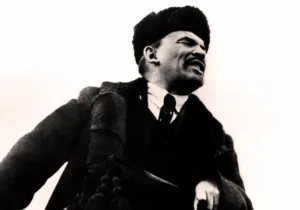
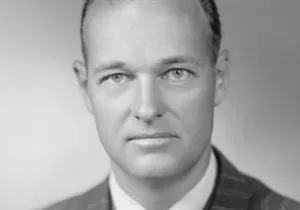
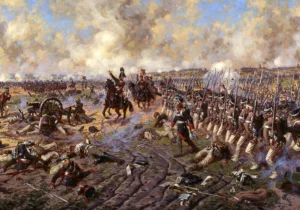
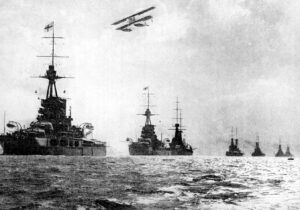
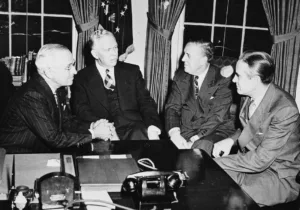

 Sponsor a student for Christianity & National Security 2024
Sponsor a student for Christianity & National Security 2024